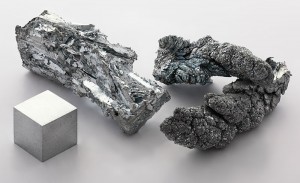In a report forwarded to CEO.CA by resource tycoon Robert Friedland, the Colorado based research firm, IHS Inc. says that zinc demand will gain new strength from its use as a micronutrient in agriculture which will help increase crop yields. According to the report, the global population is on trend to exceed 9 billion by 2050 which will create huge demand for food which can only be attained by better crop yields. IHS estimates that food consumption will increase 70% as a result of the 30% population increase expected (from 7 billion to 9 billion).
In studies completed in Brazil, China, India and Turkey adding zinc fertilizers increase crop yields from 8 to 12% annually and increased zinc content found in the grains produced from those crops by 20 to 40%.
Zinc deficiency is one of the world's major health concerns according to the World Health Organization and UNICEF. According to the World Health Organization, 400,000 children die annually as a result of severe acute malnutrition.
“Zinc is an essential element for animal and plant life, and zinc deficiency, particularly in children, has become such a threat to public health that many countries in zinc-deficient regions are implementing programs to increase the use of zinc in fertilizers,” said Stefan Schlag, director of specialty chemicals at IHS Chemical. “We see this trend contributing to healthy demand growth for zinc chemicals during the next few years.”
Zinc chemicals such as zinc oxide, zinc chloride and zinc sulfate will be critical in the future of the population.
According to the report total zinc demand for zinc-derived chemicals is 1.5 million metric tons (MMT), but that is expected to increase to 1.8MMT in 3 years (2018). 400,000 metric tons will be tied to agriculture in the form of zinc sulfate.
So where is most of the demand coming from? You guessed it, China. They currently consume roughly 42% of global zinc capacity and that figure is increasing by 6% annually.
Another area of demand for zinc chemicals which could see a rebound after a weak period post-financial crisis era is related to rubber compounding for automotive tires. This sector comprises roughly 20% of total zinc chemical consumption. IHS estimates that automotive production will double by 2030 as Brazil, India and China all develop further.
This is of particular interest to Robert Friedland as he is the 68% owner (through his Ivanhoe Mines) of the Kipushi Zinc mine in the DRC which is one of the world’s largest and most rich zinc projects on the planet. The project is still a ways away from producing, however, the project is already wildly economic with zinc grades in excess of 39%. If zinc prices rise as demand rises, then this project will become even more of a cash cow.
Read the full report HERE






















